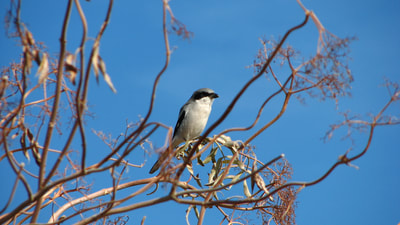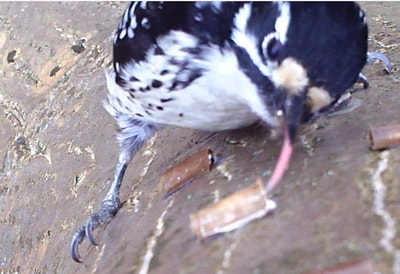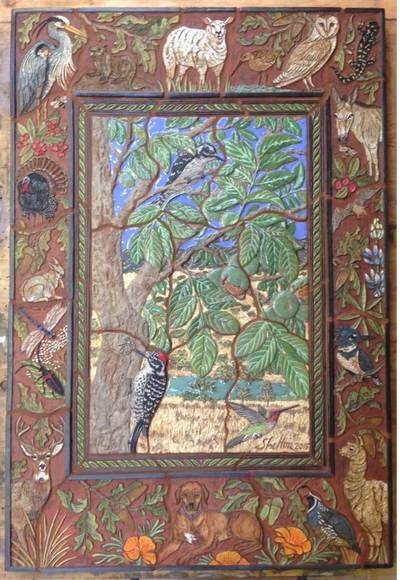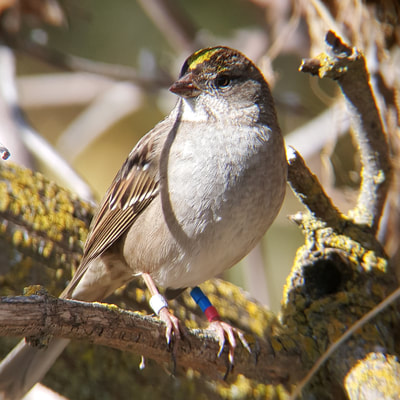Avian ecology and conservation in agricultural landscapes
|
34% of Earth’s arable land has been converted to agricultural uses, and increased agricultural intensification has been correlated with contemporary decreases in avian abundance and functional diversity. Farm-scale biodiversity enhancement features such as native woody plant hedgerows have been planted in crop margins with the expectations of attracting beneficial predators and pollinators, and of improved pest control and pollination services in adjacent crops. Despite ongoing investment and perceived benefits of these types of enhancements for biodiversity, few evaluations have tested their effectiveness at increasing avian diversity. A growing body of research has quantified crop pest reduction by birds with indirect benefits for yield, yet few studies have evaluated whether farm-scale conservation activities improve effect sizes of these services. Further, whether or not crop margin habitats confer fitness benefits necessary for avian population viability (i.e., survival and reproduction) remains almost entirely unstudied. On each of these fronts, landscape effects can counteract or interact synergistically with the effects of local activities, and assessment of farmland habitat enhancement must be done with explicit reference to landscape context. |
|
For my PhD dissertation research at the University of California, Davis, I conducted field research in a system of extant woody hedgerows and semi-natural riparian habitat patches among farmlands of the Sacramento Valley of California’s Central Valley, USA to investigate three questions.
Does farm-scale biodiversity enhancement and retention of semi-natural landscape habitat
1) influence patterns in avian abundance and diversity,
2) increase the rate of pest reduction by birds in adjacent crops,
3) provide quality habitat and confer fitness benefits for avian occupants?
Does farm-scale biodiversity enhancement and retention of semi-natural landscape habitat
1) influence patterns in avian abundance and diversity,
2) increase the rate of pest reduction by birds in adjacent crops,
3) provide quality habitat and confer fitness benefits for avian occupants?
PublicationsHeath, S. K. and R. F. Long. 2019. Multiscale habitat mediates pest reduction by birds in an intensive agricultural region. Ecosphere 10(10):e02884. open access Supplementary materials Appendix S1 and Appendix S2.
Data and code. Maas, B., S. Heath, I. Grass, C. Cassano, A. Classen, D. Faria, P. Gras, K. Williams-Guillén, M. Johnson, D. S. Karp, V. Linden, A. Martínez-Salinas, J. Schmack, and S. Kross. 2019. Experimental field exclosure of birds and bats in agricultural systems - methodological insights, potential improvements, and cost-benefit trade-offs. Basic and Applied Ecology 35:1-12. reprint request Heath, S. K., C. U. Soykan, K. L. Velas, R. Kelsey, and S. M. Kross. 2017. A bustle in the hedgerow: Woody field margins boost on farm avian diversity and abundance in an intensive agricultural landscape. Biological Conservation 212:153-161. reprint request Baumgartner, J. A., S. Kross, S. Heath, S. Connor. 2019. Supporting beneficial birds and managing pest birds. Wild Farm Alliance. |
ResourcesDavis Ranches (Virtual) Field Day presentation.
Supporting beneficial birds and managing pest birds webinar at eOrganic. The benefits of birds on the farm: pest control management and beyond Print & Digital MediaVideo: Habitat Increases Birds' Pest Control Services in Walnuts. Wild Farm Alliance, C. Haag, S. K. Heath, Fall 2021.
At orchards and vineyards, birds are outperforming pesticides. Greg Breining, Living Bird, Summer 2021 Birds help reduce codling moth larvae in orchards. Kathy Coatney, AgAlert, September 9, 2020. Encouraging beneficial birds in Walnut Orchards. Rachael Long, West Coast Nut, June 24, 2020. Why you need to welcome bug-eating birds in your nut orchard. Jack Petree, Western Fruit Grower, March 3, 2020. Managing walnut orchards for insect-eating birds. Sacha Heath & Rachael Long, Sacramento Valley Orchard Source, May 18, 2020. Beneficial birds can control codling moth in walnuts. Tim Hearden, Western Farm Press, March 18, 2020. |
Interviews & PodcastsMonitoring beneficial birds and pests. Interview with Jason Scott for My AG Life podcast.
Local Dirt Radio Interview, 90.3 KDVS, Local Dirt Radio. How to attract bug-eating birds to farms. Jeannette E. Warnert, Fruit Growers News, November 18, 2019.
How to attract bug-eating birds to farms. Hedgerows support bug-eating birds, helping with on-farm pest control. Morning Ag Clips, November 19, 2019. How to attract bug-eating birds to farms. Jeannette E. Warnert, Green Blog, UC Division of Agriculture and Natural Resources, November 18, 2019. Be bird-brainy: know your beneficial birds. Sue Bowman. LancasterFarming.com, December 31, 2020. Birds are beneficial too! Sacha Heath & Rachael Long, UC Division of Agriculture and Natural Resources Green Blog, April 24, 2019. Citrona Farms Habitat, Sarah B. Hrdy, Citrona Farms. Long time served: Farm adviser connects ag, research. Elizabeth Case, Davis Enterprise, May 7, 2014. |




















